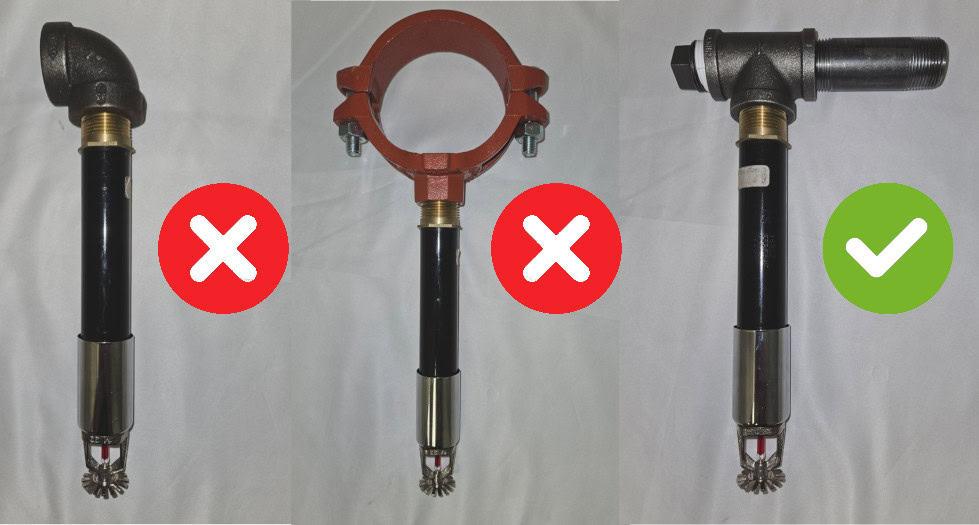NFPA 13 and manufacturers prohibit using specific fittings with dry fire sprinklers—here’s why!
Dry fire sprinkler heads minimize heat loss from climate-controlled spaces into cold ones and prevent water from getting trapped and freezing, impairing sprinkler operation. Dry sprinklers are unique pieces of fire protection equipment with unique rules.
Among these rules are those issued by manufacturers prohibiting installing dry heads into specific fittings, including mechanical tees, couplings, elbows, welded outlets, and gasket-sealed outlets.
To learn why and the risks of not following manufacturers’ installation instructions, read on:
- NFPA and manufacturer rules for installing dry sprinklers into fittings
- Why are mechanical tees, elbows, and other fittings inappropriate for dry sprinklers? (Including images!)
NFPA and manufacturer rules for fittings
The National Fire Protection Association’s NFPA 13: Standard for the Installation of Sprinkler Systems largely defers to manufacturers’ instructions for the appropriate fittings for dry heads:
From the 2022 edition of NFPA 13
15.3.4* Dry sprinklers shall only be installed in fittings as specified by the sprinkler manufacturer.
However, the annex provides some context:
A.15.3.4 Generally dry sprinklers are installed in tees. Dry sprinklers should never be installed in 90-degree elbows. Some manufacturers allow installation of dry sprinklers in couplings, CPVC adapters, and so forth.
So, what do the manufacturers say?
Forbidden fittings for dry sprinklers
Reliable’s “Sprinkler Installation Warnings!!” document summarizes the common no-nos (emphasis added):
Dry Sprinklers must not be installed into couplings, elbows, welded outlets, gasket sealed outlets, or mechanical tees.
Viking offers similar rules, such as these on its data sheet for standard response dry sprinklers, along with the reasons (emphasis added):
1. DO NOT install the dry sprinkler into a threaded elbow, coupling, or any other fitting that could interfere with thread penetration. Such installation would damage the brass seal.
2. DO NOT install dry sprinklers into couplings or fittings that would allow condensation to accumulate above the seal when the sprinkler is located in an area subject to freezing.
Allowed fittings
The go-to fittings for installing dry sprinklers in wet and dry systems are malleable or ductile iron tees (ANSI B16.3 Class 150) or cast-iron tees (ANSI B16.4 Class 125) unless the system is CPVC. Manufacturers approve specifically compatible and listed CPVC adapters and tees for installing dry heads in wet CPVC systems.
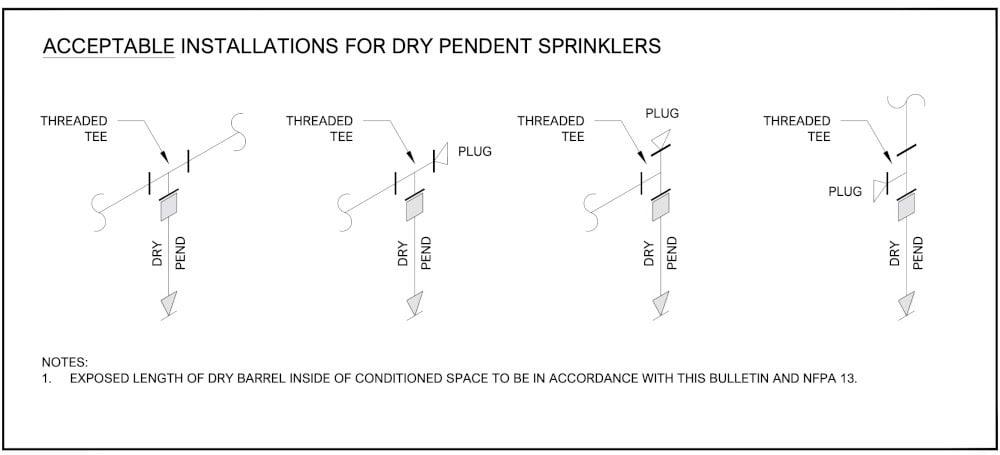
In addition, some manufacturers may provide an otherwise prohibited fitting type specifically designed for a dry sprinkler. For example, Tyco allows DS-ECC Dry-Type Sprinklers to be installed “in the 1 in. NPT outlet of a GRINNELL Figure 730 Mechanical Tee” within a wet system.
So, to summarize, the basic approved fittings are:
- Iron pipe threaded tees
- Appropriately listed CPVC tees and adapters
- Anything else a specific manufacturer’s data sheet and instructions allow
Why are mechanical tees, elbows, and other fittings inappropriate for dry sprinklers?
There are two primary reasons certain fittings aren’t suitable for dry sprinklers, as alluded to in Viking’s installation instructions:
- Some fittings interfere with and can damage a dry sprinkler’s threads and inlet/brass seal.
- Dry heads’ brass seals must penetrate to a specific depth, and improper fittings can leave depressions where water will pool after a system activation or due to condensation. Draining the system doesn’t get rid of this water, which can freeze around the brass inlet and create an ice blockage.
Let’s examine these impacts in action. First, we’ll look at a correct dry sprinkler installation into an iron tee:
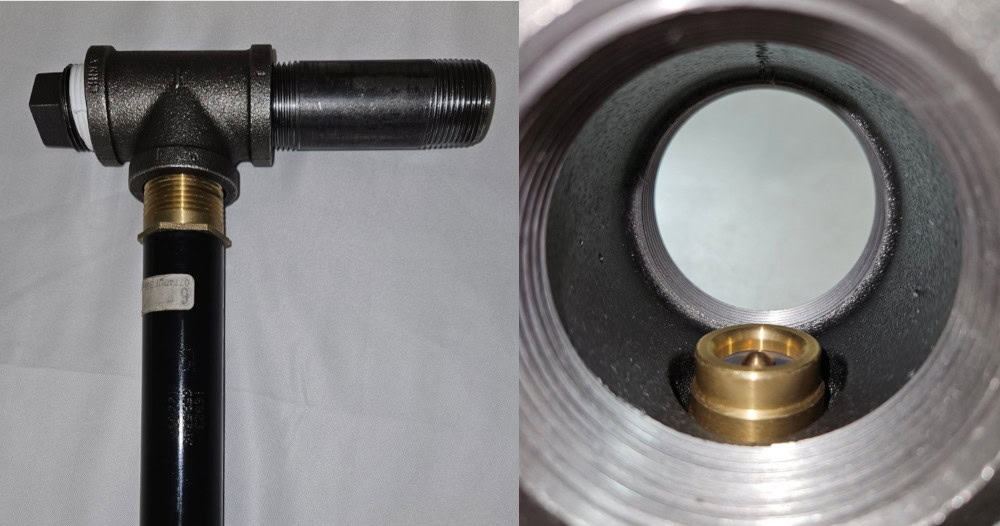
Above, note the elevated position of the inlet/brass seal. When a properly pitched dry system is drained, there is minimal opportunity for water to collect and potentially freeze. Now, let’s look at an incorrect installation into a mechanical tee:
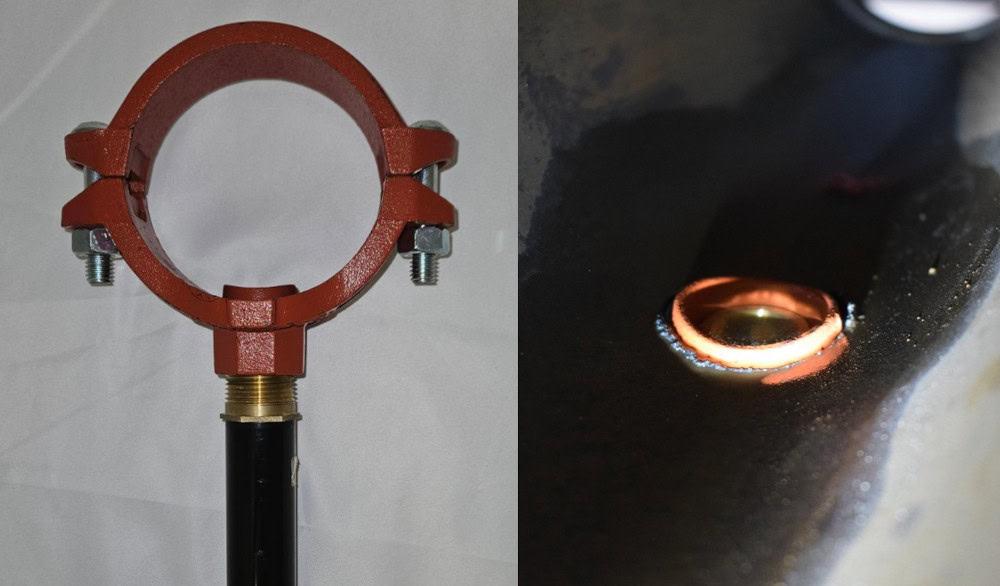
In this case and the photo above, the dry sprinkler’s threads and inlet don’t fully penetrate into the fitting and pipe, leaving a deep divot. Notice how the water has drained from the pipe-interior cutaway, but leftover water—which may freeze—pooled above the sprinkler.
We also created a pipe cutaway showing a welded outlet installation. Below, see how the position of the dry sprinkler’s inlet is low and water again pools:
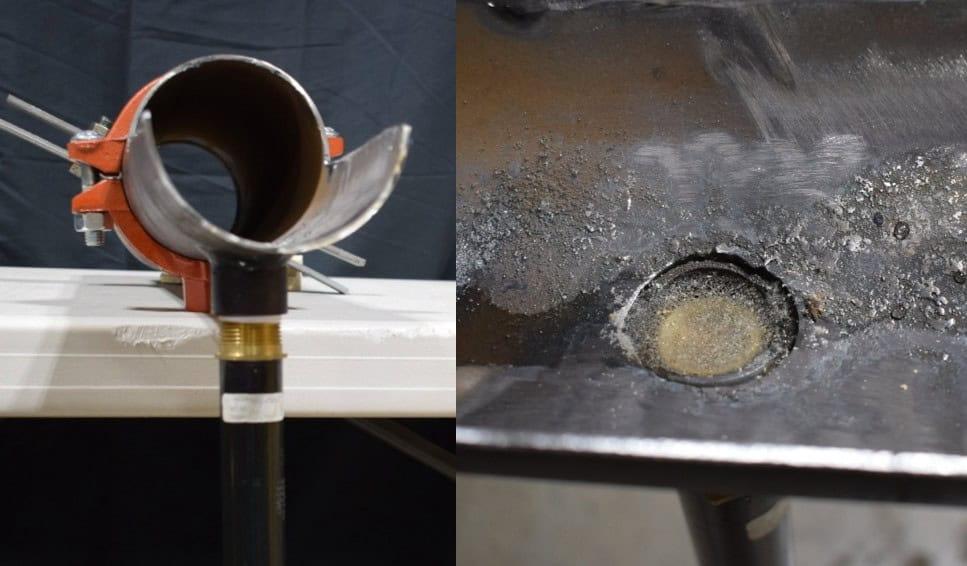
Finally, here’s an example of why dry sprinklers shouldn’t go into elbows:
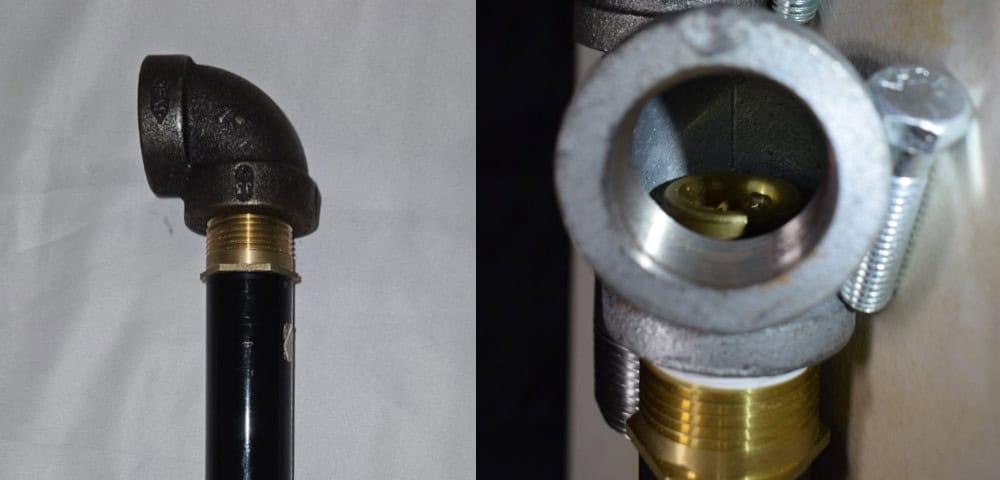
In the interior image on the left above, the brass seal may contact the curvature of the elbow, damaging it and impairing sprinkler operation.
Follow the manufacturers’ installation rules!
Again, there are some general rules for installing dry sprinklers: threaded iron tees or specifically designed CPVC tees or adapters are the go-to fittings, and elbows, mechanical tees, welded outlets, couplings, and gasket-sealed outlets are generally off the table.
However, there are exceptions, so the real rule is this: always look at the dry sprinkler’s data sheet or a manufacturer’s separate installation instructions. As NFPA 13 notes, “Some manufacturers allow installation of dry sprinklers in couplings, CPVC adapters, and so forth.” So, a given sprinkler may have specific fittings that provide additional options.
All dry heads are custom-made, so contact QRFS directly to buy them. Be sure to check out our previous blog on how to order dry sprinklers with the right barrel length. Email us at support@qrfs.com or call 888-361-6662 with any questions or to place an order!
This blog was originally posted at blog.qrfs.com. If this article helped you, check us out at Facebook.com/QuickResponseFireSupply or on Twitter @QuickResponseFS.


